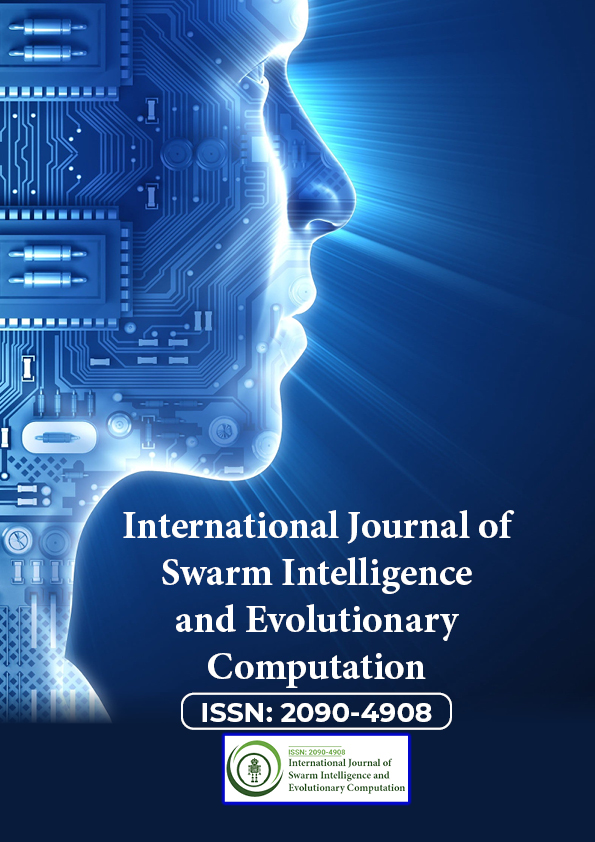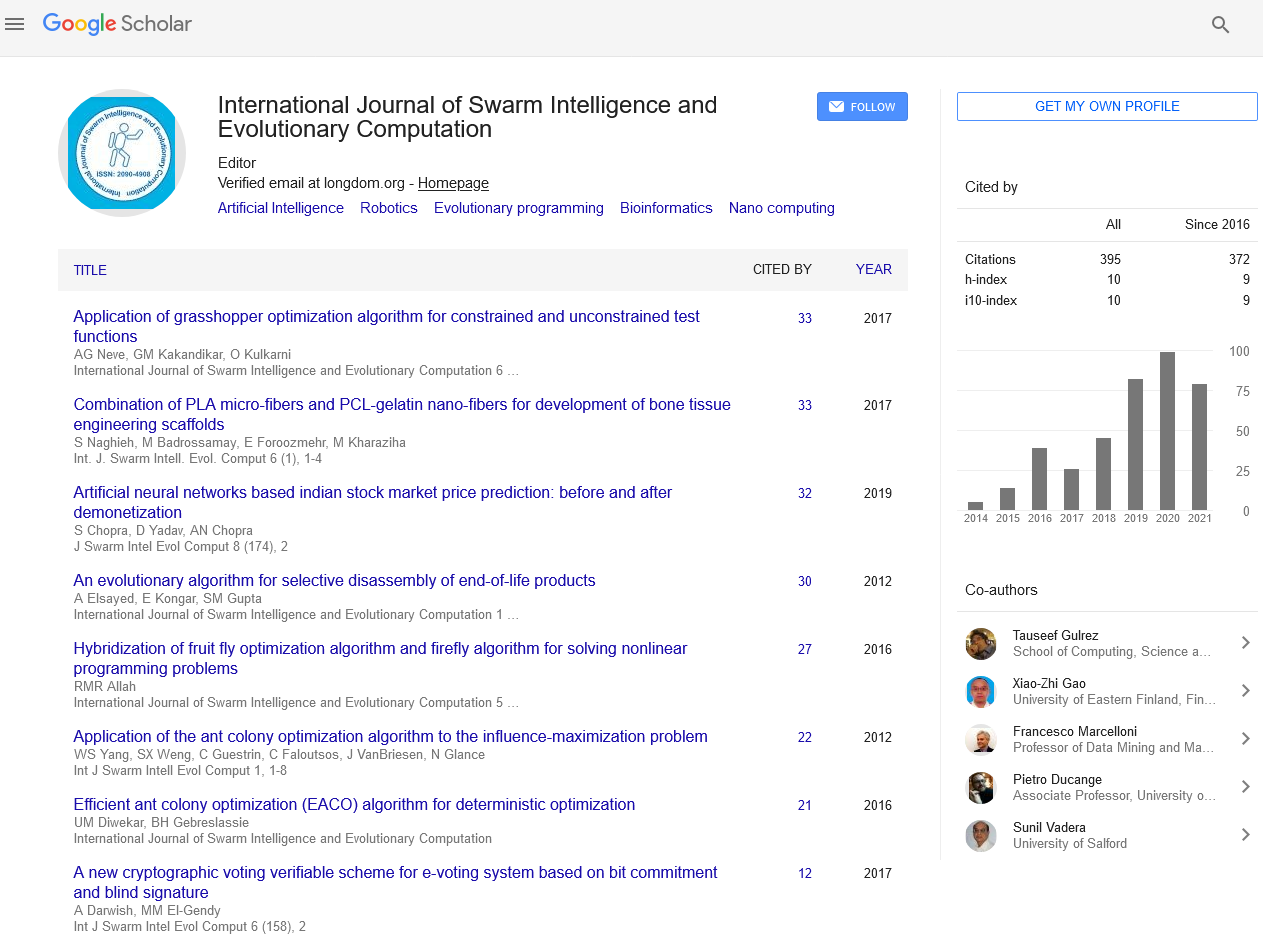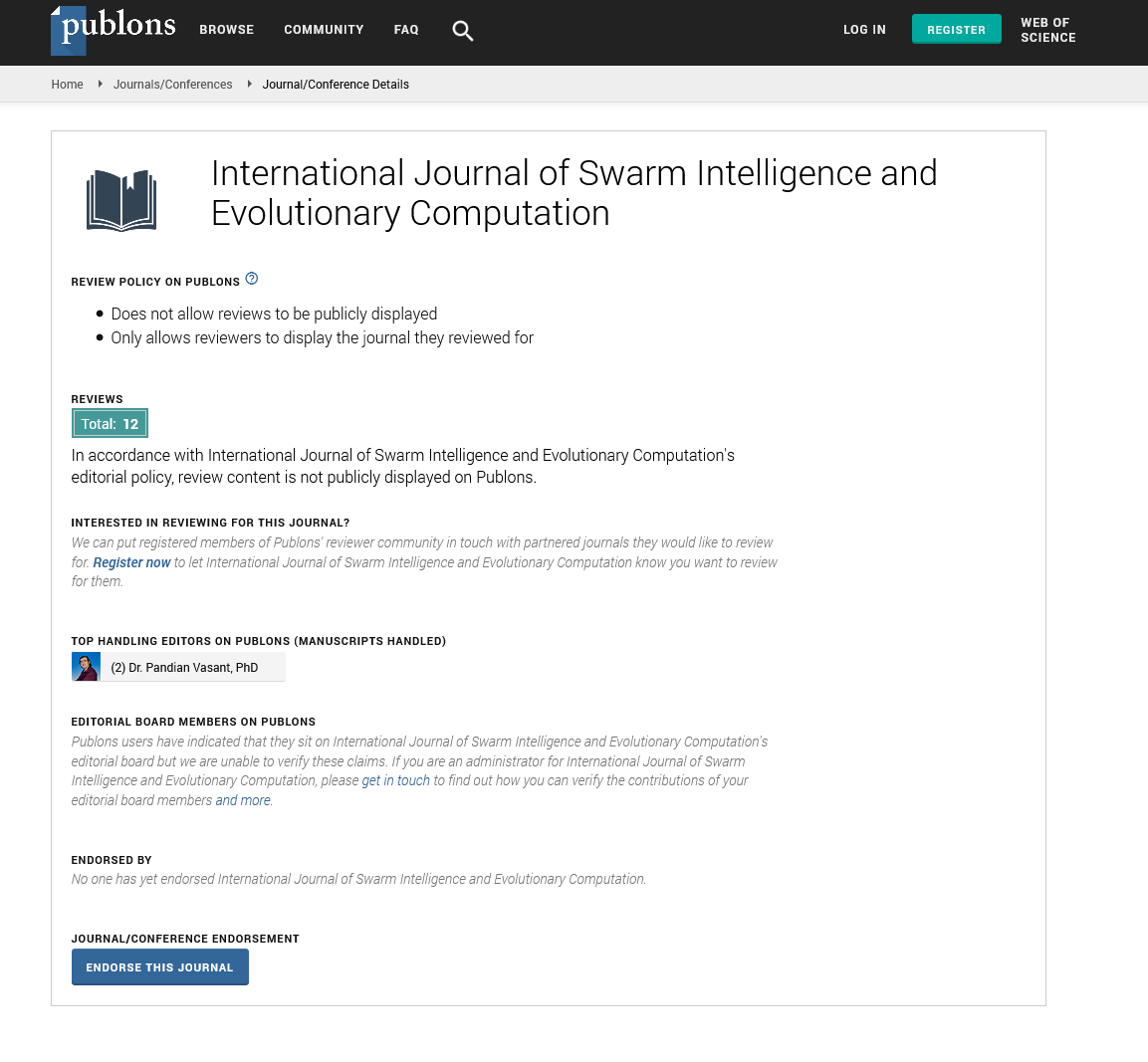Indexed In
- Genamics JournalSeek
- RefSeek
- Hamdard University
- EBSCO A-Z
- OCLC- WorldCat
- Publons
- Euro Pub
- Google Scholar
Useful Links
Share This Page
Journal Flyer

Open Access Journals
- Agri and Aquaculture
- Biochemistry
- Bioinformatics & Systems Biology
- Business & Management
- Chemistry
- Clinical Sciences
- Engineering
- Food & Nutrition
- General Science
- Genetics & Molecular Biology
- Immunology & Microbiology
- Medical Sciences
- Neuroscience & Psychology
- Nursing & Health Care
- Pharmaceutical Sciences
Commentary Article - (2025) Volume 14, Issue 2
Human-Swarm Interface: Facilitating Effective Collaboration and Control in Collective Intelligence Systems
Gloria Bethg*Received: 18-Apr-2025, Manuscript No. SIEC-25-28709; Editor assigned: 21-Apr-2025, Pre QC No. SIEC-25-28709 (PQ); Reviewed: 05-May-2025, QC No. SIEC-25-28709; Revised: 12-May-2025, Manuscript No. SIEC-25-28709 (R); Published: 19-May-2025, DOI: 10.35248/2090-4908.24.14.426
Description
As Swarm AI systems become more sophisticated and are deployed in increasingly critical applications, the design of effective human-swarm interfaces (HSIs) will become paramount. Ensuring that human operators can effectively understand, monitor, and interact with large-scale autonomous swarm systems is crucial for maintaining trust, enabling effective collaboration, and ensuring safety and accountability. Designing intuitive and informative HSIs for Swarm AI presents unique challenges due to the distributed nature of these systems and the emergent complexity of their collective behavior.
Swarms are typically composed of numerous agents that operate based on local rules and minimal centralized control. While this architecture confers resilience and flexibility, it can also pose challenges for human operators. Unlike traditional human-robot interaction (HRI), which often involves direct control of individual agents or predictable systems, HSI requires managing and interpreting the behavior of large, dynamic collectives. Applications in search and rescue, environmental monitoring, agriculture, and defense demand a robust interface that allows humans to guide swarms at a high level while still responding to changing conditions and goals.
Traditional human-computer interfaces, designed for interacting with single agents or centralized systems, are often inadequate for dealing with the dynamics of a large number of autonomous agents operating under decentralized control. Effective HSIs for Swarm AI need to provide human operators with a high-level understanding of the swarm's overall state, goals, and performance, without overwhelming them with information about the individual agents. This might involve visualizing emergent patterns of behavior, highlighting key events or anomalies, and providing aggregated metrics of swarm performance.
In disaster response scenarios, human-swarm collaboration has been used for real-time mapping of collapsed buildings or wildfire spread, where a human operator guides the swarm toward regions of interest while relying on the swarm’s distributed autonomy for local navigation. In agriculture, farmers interact with drone swarms for crop surveillance or pesticide distribution through simple mobile interfaces. In military applications, human operators direct heterogeneous swarms for reconnaissance and threat monitoring via tactical dashboards and AR visualizations.
Each of these cases illustrates the importance of context-aware, scalable interfaces that match human intentions with swarm capabilities. The human-swarm interface represents a pivotal nexus between human intelligence and artificial collective intelligence. As swarms become integral to critical operations across domains, the ability of humans to intuitively collaborate with these systems will determine their ultimate success and acceptance. By combining advances in interface design, cognitive modeling, and AI, we can build systems where humans and swarms act as partners—each amplifying the strengths of the other. The future of collective intelligence lies not just in algorithms or machines, but in how we connect with them.
Furthermore, HSIs for Swarm AI need to enable effective interaction and control. This could involve allowing human operators to set high-level goals or mission objectives for the swarm, define operational constraints or safety boundaries, and intervene in the swarm's behavior when necessary. However, directly controlling individual agents in a large swarm is often impractical. Instead, HSIs might focus on providing more abstract forms of influence, such as adjusting the swarm's behavioral parameters, introducing virtual "pheromones" or "attractors" to guide the swarm's movement, or assigning high-level tasks to subgroups of agents. Research in HSI for Swarm AI is exploring various approaches, including visual analytics, haptic feedback, and natural language interfaces, to facilitate effective human-swarm collaboration. The development of intuitive and effective HSIs is crucial for bridging the gap between human operators and the collective intelligence of Swarm AI systems, enabling us to harness their power responsibly and effectively in a wide range of applications.
Citation: Bethg G (2025). The Human-Swarm Interface: Facilitating Effective Collaboration and Control in Collective Intelligence Systems. Int J Swarm Evol Comput. 14:426.
Copyright: © 2025 Bethg G. This is an open-access article distributed under the terms of the Creative Commons Attribution License, which permits unrestricted use, distribution and reproduction in any medium, provided the original author and source are credited


